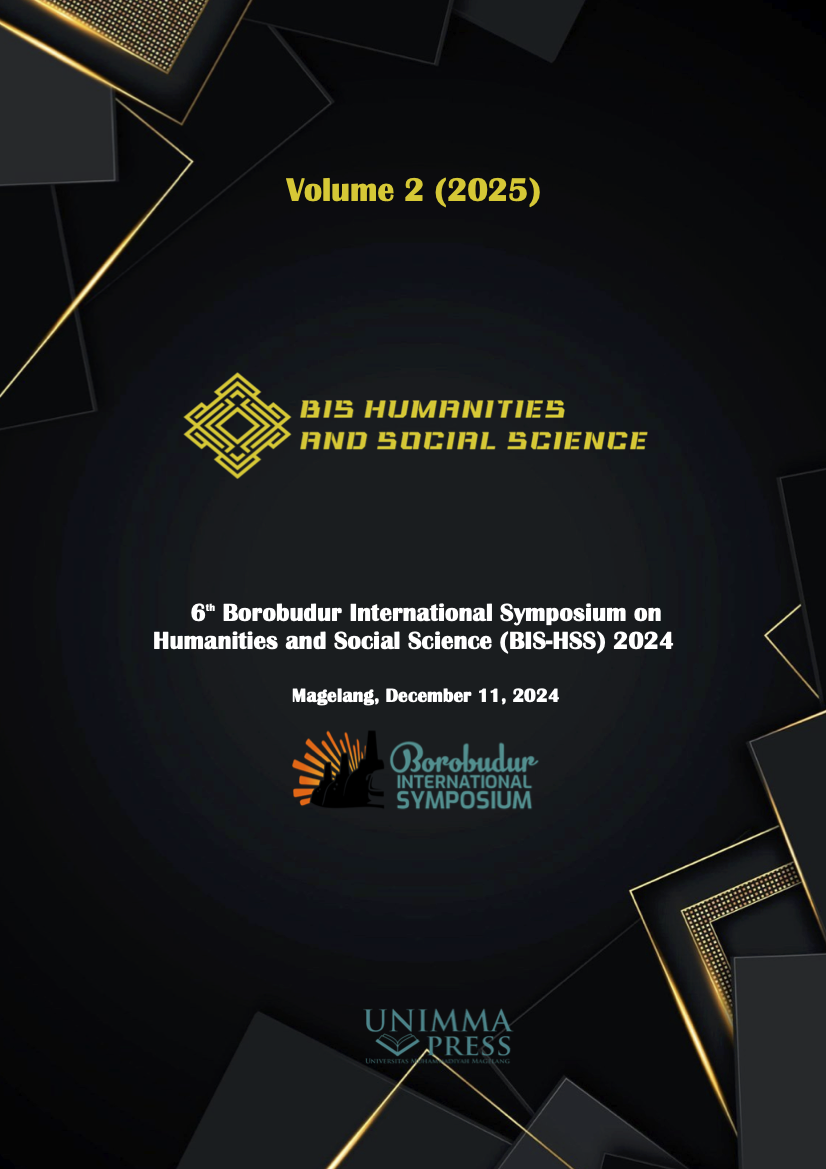Intercultural communication and innovation in women’s empowerment within the Madurese gastronomy industry
Keywords:
Intercultural communication, Innovation, Women’s empowerment, Madurese culinary, Madurese gastronomyAbstract
Intercultural communication is pivotal in fostering innovation for women's empowerment, particularly within the traditional culinary industry deeply rooted in local cultural values. This qualitative study investigates how Madura women entrepreneurs utilize intercultural communication competencies to innovate their products and marketing strategies for Madura's signature cuisine. Through in-depth interviews and participatory observation with womenpreneurs and customers from diverse cultural backgrounds, the findings reveal that womenpreneurs' ability to understand and adapt to cultural differences significantly expands their market reach. Innovations include flavor adaptations tailored to international consumers' preferences, product packaging reflecting Madura's cultural values, and marketing narratives based on local cultural storytelling. The study also highlights that cross-cultural collaborations, both locally and internationally, are key factors in promoting Madura's culinary heritage to global markets. The implications suggest that empowering women through intercultural communication training not only strengthens local cultural identity but also enhances the economic sustainability of local communities, offering new insights into intercultural communication as an instrument of innovation in women’s empowerment and traditional culinary branding, alongside a practical framework for culturally-based policy development.
References
[1] BPS, “Badan Pusat Statistik,” 2014. http://www.bps.go.id/ (accessed Nov. 13, 2015).
[2] Y. Y. Kim and W. B. Gudykunst, Theories in intercultural communication., vol. 12. ERIC, 1988.
[3] N. Page and C. E. Czuba, “Empowerment: What is it,” J. Ext., vol. 37, no. 5, pp. 1–5, 1999.
[4] W. B. Gudykunst, Cross-Cultural and Intercultural Communication. SAGE Publications, 2003.
[5] E. Goffman , The presentation of self in everyday life. 1959.
[6] B. W. Spradley, “Managing Change Creatively,” JONA J. Nurs. Adm., vol. 10, no. 5, 1980, [Online]. Available: https://journals.lww.com/jonajournal/fulltext/1980/05000/managing_change_creatively.7.aspx.
[7] E. J. Halcomb and P. M. Davidson, “Is verbatim transcription of interview data always necessary?,” Appl. Nurs. Res., vol. 19, no. 1, pp. 38–42, 2006, doi: 10.1016/j.apnr.2005.06.001.
[8] P. Bazeley and K. Jackson, “Qualitative data analysis with NVivo (Second),” J. Educ. Teaching. Vol. issue pages or DOI, 2013.
[9] I. hanna S. Sihombing, KAMALA Kepariwisataan Berbasis Masyarakat, Budaya, dan Berkelanjutan: Potensi Menuju Pariwisata Budaya Berkelanjutan. 2024.
[10] S. Utami, “Kuliner Sebagai Identitas Budaya: Perspektif Komunikasi Lintas Budaya ISSN,” J. Strateg. Commun., vol. 8, no. 2, pp. 36–44, 2018.
[11] I. W. Suteja, “Peran Perempuan Dalam Mengangkat Citra Kuliner Lokal Di Kawasan Wisata Narmada,” vol. 9, no. 1, 2020.
[12] R. P. Habibie, H. Mulyaningsih, and ..., “Development of Madura Traditional Culinary As Cultural Heritage and Tradition,” … Soc. …, pp. 583–588, 2021, [Online]. Available: https://proceedings.uin-alauddin.ac.id/index.php/sis/SIS2021/paper/view/140.
[13] D. P. Kurniawati, “Pemberdayaan masyarakat di bidang usaha ekonomi (studi pada Badan Pemberdayaan Masyarakat kota Mojokerto).” Brawijaya University, 2013.
[14] A. J. Antonites and J. J. Van Vuuren, “Inducing entrepreneurial creativity, innovation and opportunity-finding skills,” South African J. Econ. Manag. Sci., vol. 8, no. 3, pp. 255–271, 2005.
[15] B. C. Kim, G. Lee, S. K. Murrmann, and T. R. George, “Motivational effects of empowerment on employees’ organizational commitment: A mediating role of management trustworthiness,” Cornell Hosp. Q., vol. 53, no. 1, pp. 10–19, 2012, doi: 10.1177/1938965511426561.
[16] K. M. Omar, “Measuring the entrepreneurship characteristics and its impact on entrepreneurial intentions,” Open J. Bus. Manag., vol. 9, no. 2, pp. 672–687, 2021.
[17] D. Sun, “Entrepreneurship Education Promotes Individual Entrepreneurial Intention: Does Proactive Personality Work?,” Open Access Libr. J., vol. 7, no. 10, p. 1, 2020.
[18] A. Febriana, S. A. Prabintari, A. Diantama, D. Novianto, and R. W. S. Lestari, “Kontribusi Perempuan Penjual Kuliner Dalam Pengembangan Wisata Argo Wijil,” J. Soc. Bridg., vol. 2, no. 1, pp. 41–53, 2024, doi: 10.59012/jsb.v2i1.27.
[19] Fauzi Achmad Riyadi, Dimas Aryo Putro, and Asep Parantika, “Identintas Budaya Dan Kuliner Yogyakarta Sebagai Gastronomi Dan Perspektif Pariwisata Yang Berkelanjutan,” J. Ilm. Wahana Pendidik., vol. 9, no. April, pp. 152–161, 2023.
[20] J. Whitfield, M. B. Gouthro, and M. Moital, the Routledge Handbook of Events and Sustainability. 2024.
[21] W. B. Gudykunst and Y. Y. Kim, Communicating with Strangers: An Approach to Intercultural Communication. McGraw-Hill, 2003.
[22] K. Facer, J. Siebers, and B. Smith, Working with Time in Qualitative Research: Case Studies, Theory and Practice. Taylor & Francis, 2021.
[23] J. W. Creswell, Qualitative enquiry & research design, choosing among five approaches, vol. 2nd ed. 2007.
[24] P. D. S. Pitanatri, I. G. Pitana, and M. Valeri, “Natural and Man-Made Crisis Management in a Small Island Tourism Destination: The Case of Bali,” in Tourism Risk: Crisis and Recovery Management, Emerald Publishing Limited, 2022, pp. 61–79.
Downloads
Published
Conference Proceedings Volume
Section
License

This work is licensed under a Creative Commons Attribution-NonCommercial 4.0 International License.

